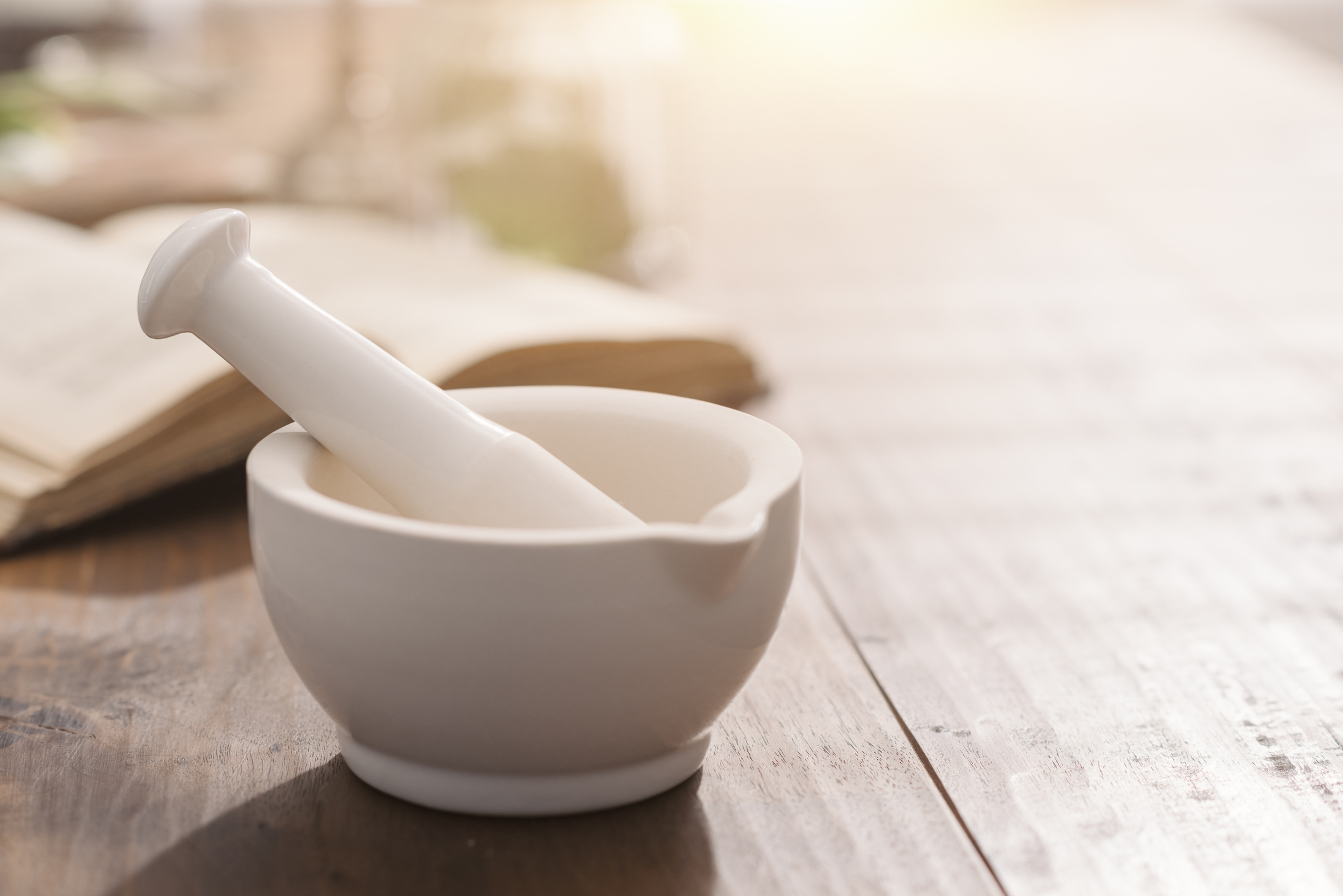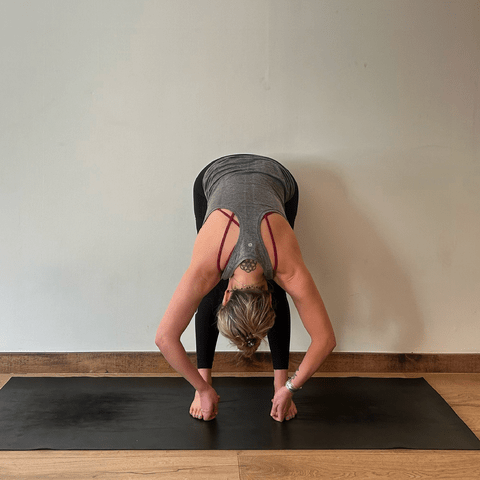
Allergies are never fun! For some people they start as a small sniffle and then progress into the inability to breathe. For others, they can be completely debilitating, causing severe headaches and affecting the overall quality of life. The good news is that they can be avoided. The classical yoga and Ayurveda texts discuss ways to prevent and also manage these unfortunate seasonal troubles.
The Ayurvedic Perspective
According to Ayurveda, a 5,000 year old natural system of healing, as you transition through the seasons, your body undergoes subtle shifts, often leading to an imbalance in the doshas (the fundamental energies governing your body). Particularly, the shift from winter to spring can aggravate Kapha Dosha, leading to increased susceptibility to allergies. This can manifest as increased mucus and congestion, since Kapha Dosha is made of the elements of earth and water.
The Yogic Perspective
So many of the yoga asanas (poses) enhance circulation and promote detoxification, helping to clear toxins that might contribute to inflammation and allergic responses. Poses like twists and forward bends can help in the lymphatic drainage and purification of blood, which can improve overall immune function. Yoga helps in regulating the immune system, reducing its tendency to overreact to harmless substances like pollen or pet dander. A regular yoga practice can help balance immune response, which is super crucial for those suffering from allergies.
The Yoga and Ayurveda Connection
Yoga and Ayurveda are meant to be practiced together because they are closely interlinked systems within the broader scope of Vedic knowledge, each complementing the other to enhance well-being and balance in life. Ayurveda focuses on the health and balance of the body, mind, and spirit through diet, lifestyle, and natural therapies. Yoga, on the other hand, emphasizes physical postures, breathing techniques, and meditation to achieve mental and spiritual clarity and balance. When practiced together, you will be more balanced and at ease as you move through this beautiful life!
Yoga Asanas (Poses) For Allergies
Uttanasana – Standing Forward Fold

How to get into Uttanasana: Stand with your feet hips-width distance apart and fold forward over them, sending your chest towards your thighs. Hook your big toes with your peace fingers if it feels comfortable to do so.
Forward folds, like Uttanasana, can help in draining the sinuses due to the head-down position. This position allows gravity to help clear blocked nasal passages, which is beneficial for relieving sinus pressure and congestion associated with allergies. Forward folds also slightly compress the abdomen, which can stimulate the abdominal organs, including the digestive tract. Improved digestion helps in detoxifying the body and boosting immune function, both of which are crucial in managing allergies. Lastly, forward folding will help encourage a longer exhale, which is key to allergy prevention and management.
How to:
- Begin standing at the top of your mat – or anywhere you’d like! This pose can be done anywhere.
- Separate your feet about hips-width apart and bend your knees. Release your head and upper body over your legs.
- If possible, wrap your first two fingers and thumbs around your big toes and bend your elbows out to the sides.
- If reaching for the toes isn’t available to you, you can keep your knees bent or bend them deeper to reach the ground. You may also put a yoga block or any prop of your choice beneath your hands. A stack of books or a water bottle work great here!
- Elongate all sides of your neck and imagine the tips of your ears getting heavier to release any tension in the neck.
- Try to scoop the low abdominals in and up to create more space for your chest to release towards your legs and distribute the weight throughout the feet.
- You may need to put a bit of weight towards the fronts of the feet to allow your hips to move over your heels.
- As you inhale, engage your thighs if you’re lengthening your legs. As you exhale, spread through your collarbones.
Ardha Matsyendrasana – Half Seated Spinal Twist

How to get into Half Lord of the Fishes: Start with your legs out in front of you, then cross one foot over the bottom leg as you bend that knee, keeping your sits bones rooted firmly on the ground. Hook your opposite elbow around the lifted knee to turn from your center and gaze over your back shoulder (the arm that is planted on the floor behind you).
Twisting asanas (poses) are great for supporting digestion, detoxification, and respiratory health. They stimulate the digestive organs by compressing and massaging the abdominal organs, including the stomach, liver, and intestines. This stimulation helps improve digestion and the elimination of toxins (Ama). Twists can also benefit the respiratory system because the action of twisting and then releasing can help increase the movement of the diaphragm and rib cage, which in turn enhances lung capacity and facilitates deeper breathing. According to Ayurveda, twists help in balancing energy channels (nadis) and centers (chakras) in the body. Balancing these energies can strengthen the body’s natural defenses and reduce the susceptibility to allergies.
Lastly, the action of twisting and then releasing can help facilitate lymphatic drainage. The lymphatic system plays a crucial role in immune function by removing waste and carrying white blood cells throughout the body. Improved lymphatic flow helps ensure that the immune system is functioning well.
How to:
- Begin sitting with your legs stretched out long in front of you.
- Bend your right knee and hug it into your chest. Make sure both sitting bones are rooting down into the mat.
- Step your right foot outside of your left thigh and keep hugging your leg in towards your chest.
- As you inhale, lengthen your spine. As you exhale, turn to the right and bring your right hand outside of your right hip or further behind you.
- You can hug your right leg in with your left arm or use it to help you twist a bit deeper.
- If it’s available to you, you may also bend your left leg in, but if it causes your sitting bones to lift or your hips to shift, re-extend your leg back out.
- With every inhale, lengthen your spine and with every exhale turn your navel to the right.
- Stay for a few cycles of breathing and then repeat on the left side.
Ayurvedic Digestive Tea for Allergies

Ayurvedic allergy tea made from cumin, coriander, and fennel seeds
According to Ayurveda, allergies often occur when the immune system overreacts to a foreign substance that doesn’t bother most other people. These substances are called allergens and can include pollen, pet dander, and dust mites. Allergies can be managed by balancing the doshas (the fundamental bioelements in Ayurvedic medicine) and strengthening the body’s natural defenses. Ayurveda often addresses allergies by reducing Kapha and supporting the digestive fire, or Agni, to reduce the production of Ama (toxins). For managing allergies with tea, a “Digestive (CCF) Tea” made from cumin, coriander, and fennel seeds is recommended. This tea aids digestion, which is so important in preventing the accumulation of Ama.
Here are some of the key benefits of CCF tea according to Ayurvedic principles:
- Digestive Support: CCF tea is renowned for its ability to aid in digestion. The combination of cumin, coriander, and fennel helps in the assimilation and absorption of nutrients and eases digestive discomforts like gas, bloating, and indigestion.
- Detoxification: This tea is considered a gentle yet effective detoxifier. It assists in flushing toxins out of the body, particularly from the urinary tract, liver, and kidneys.
- Balancing Doshas: CCF tea is known for its ability to balance the three doshas (Vata, Pitta, Kapha) in Ayurveda, which is essential for maintaining health and well-being.
- Boosts Metabolism: The ingredients in CCF tea are believed to stimulate the metabolism, making it an excellent drink for those looking to maintain a healthy weight.
- Reduces Inflammation: With its anti-inflammatory properties, CCF tea can help reduce inflammation in the body, which is often the root cause of many health issues.
- Improves Skin Health: The detoxifying and anti-inflammatory properties of this tea can also contribute to clearer, healthier skin.
- Enhances Immune Function: The combination of these three spices is known to strengthen the immune system, making the body more resilient against infections and diseases.
- Calming Effect: CCF tea has a calming effect on the mind and body, helping to reduce stress and promote relaxation.
- Regulates Blood Sugar: Especially beneficial for those with diabetes or metabolic issues, CCF tea can help regulate blood sugar levels
Ingredients:
1tsp cumin
1tsp coriander
1tsp fennel
4 cups of water
Instructions:
Boil water, add spices, turn heat to simmer, cover and steep for about 10 minutes or until spices sink to the bottom. Strain and drink throughout your day. Store your tea in a thermos, as this is meant to be consumed warm.
You can also purchase the tea pre-made from a brand I love, Banyan Botanicals.
Take Care of Yourself
Make sure you move your body, spend time with people you love, and take care of your overall digestion and keep a balanced diet during this allergy season, and throughout all seasons! Please also always check with your healthcare provider before trying a new physical activity or taking any new spices or teas.
A note from Lisa: My mission is to guide individuals on their journey to balance and holistic well-being using the age-old wisdom of yoga and Ayurveda. I provide insights into dietary choices, lifestyle habits, and general well-being practices tailored to your unique constitution. It is essential to note that my services are strictly for educational and supportive purposes. I do not diagnose, treat, or cure diseases or medical conditions. If you have specific medical queries, always consult with a licensed healthcare provider. I am eager to assist you on your wellness journey and warmly invite volunteers who wish to experience and participate in case studies exploring Ayurvedic practices. Together, let’s embark on a path to holistic health.

— Written by Ayurveda teacher Lisa Bermudez







